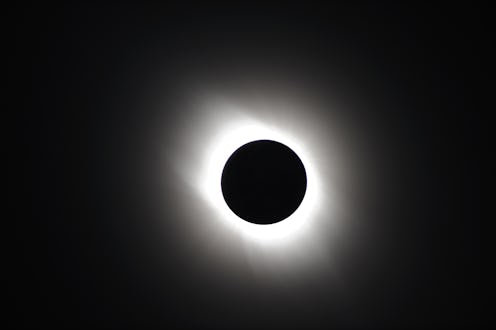Life
Here's When The Rest Of 2017's Eclipses Are

A new hobby can be a lot of effort: Besides picking your activity and acquiring whatever equipment you need for it, you also have to find additional time to actually do it all. Happily, though, taking up star-gazing and sky-watching is incredibly easy — all you need are the dates! Accordingly, you might be wondering when the eclipses in 2017 are; obviously before you can embark on your new pastime, you're going to want to know what to look out for and when. Happily, there are plenty of spectacular celestial events left in 2017 to get excited about.
As many night-watchers will attest, 2017 got off to an impressive astronomical start: February 10 and 11 saw the arrival of a penumbral lunar eclipse, the Snow Moon (aka the February full moon), and a comet fly-by all on the same night. Then, on February 26, those living in the right area of the world to see it witnessed an annular solar eclipse, whereby the Moon partially blocked out the Sun, leaving a ring of sunlight, or "ring of fire," visible in sky from Earth.
But in case you missed either of those celestial events, there's even more coming this year, and these can be enjoyed for free, from almost anywhere in the world.
If you're an eclipse-aficionado, you'll want to mark August down as the month to get snooping at the sky, as there are two more eclipses happening then. First, on Aug. 7, we'll see a partial lunar eclipse. Visible from Europe, Africa, Asia, Australia, it will last for just under two hours. A partial eclipse happens when the Earth moves between the Sun and Moon, but the three don't quite line-up in a straight position in space, leaving only a tiny fraction of the Moon's surface is covered by the darkest part of the Earth's shadow (called the umbra). The rest of the Moon is covered by the outer part.
Then, two weeks later on Aug. 21, we get treated to a total solar eclipse. Why is this one so notable? Because, as Earthsky notes, it will be the "first total solar eclipse visible from the U.S. since 1991 (seen only from part of Hawaii), and [the] first visible from [the] contiguous U.S. since 1979." That's right: It's been nearly 40 years since a total solar eclipse, wherein the Sun is totally blocked by the Moon, has been visible from the United States. Writes Earthsky, "The path of the moon’s umbral shadow begins in the northern Pacific and crosses the U.S. from west to east through parts of the following states: Oregon, Idaho, Montana, Wyoming, Nebraska, Kansas, Missouri, Illinois, Kentucky, Tennessee, North Carolina, Georgia, and South Carolina. The moon’s penumbral shadow produces a partial eclipse visible from a much larger region covering most of North America."
Fun fact: This eclipse also just so happens to be one semester (which is six lunar months) after the Feb. 26 annular solar eclipse.
Need a little bit of help getting off to a good start with star-gazing? Stardate Online, the University of Texas McDonald Observatory's public education and outreach arm, recommends keeping it simple staying in your backyard and shunning expensive telescopes or binoculars: "The only instrument that most beginners need is their eye," the site notes. "Our eyes can detect subtle variations in brightness, determine the colors and relative temperatures of stars, and track the motions of the Moon and planets."
Sounds good to me. Happy eclipsing!